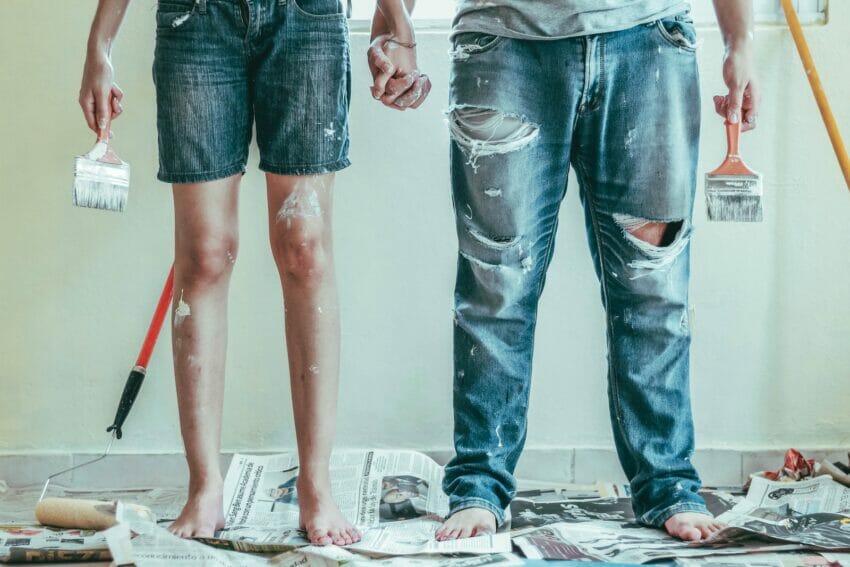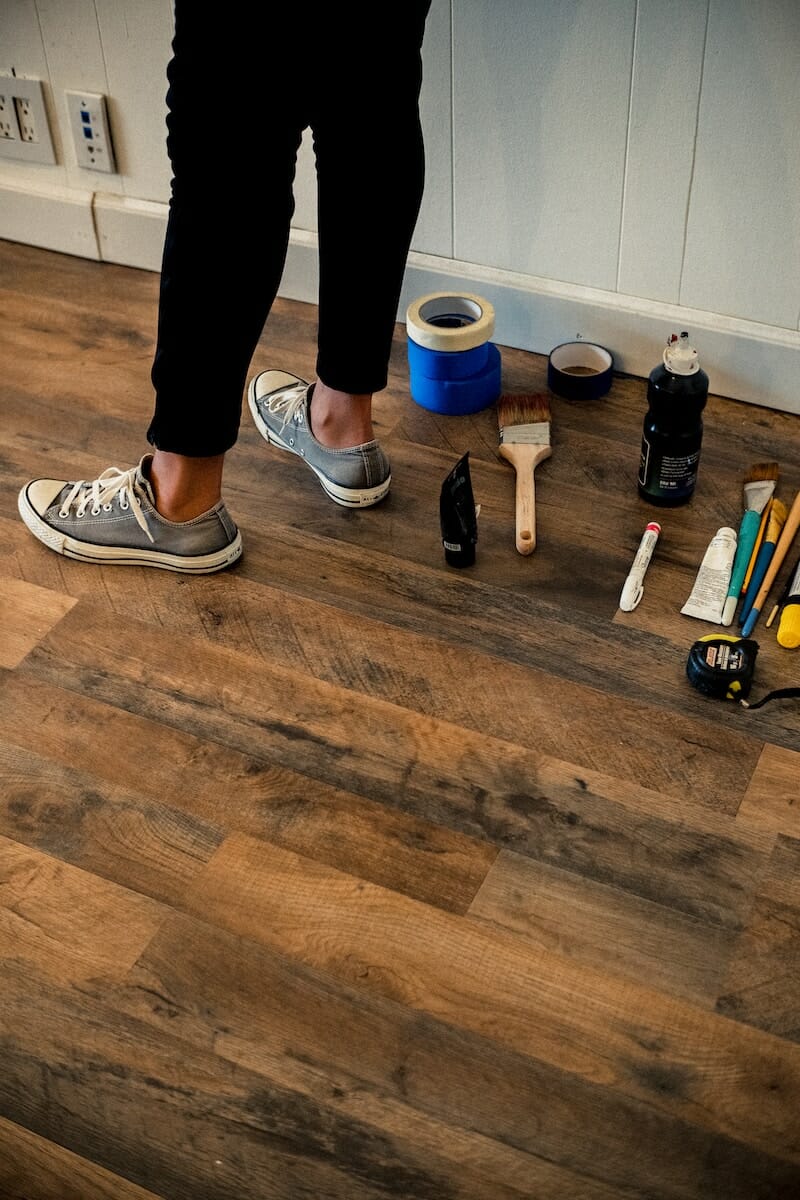DIY projects can work out to be pretty expensive. You can make a lot of mistakes, waste a lot of material, and need to purchase tools you’ll never need to use again. All in all, you use up a lot of time and cash and anything you try to make for your own home turns out far less than perfect.
At this point you give up and hire someone to do it for you, meaning you end up spending even more money! But could you break the cycle and make something from scratch without obliterating your budget? Yes!

If you’ve got a few ideas for your home decor, or you want to put the finishing touches on a home renovation or extension, check out these tips for keeping the costs low while the results come out high quality.
Do One Project at a Time
It’s easy to get overwhelmed when you’re trying to complete more than one project at once. It’s why we strongly recommend doing one project at a time. This way you can put your whole focus into the job at hand, without needing to worry about when something else is going to get done.
And if you’re doing one project at a time, you’re not buying bundles of material you don’t need. You’re investing in exactly what you do need right now, with a bit to spare, and nothing is left to sit and clog up the attic or shed.
Simply put, you save money in the here and now, and get things done far faster. This means the work actually pays off in the long run because you’re more likely to finish it!

You Might Not Need as Many Tools as You Think
It’s true! You might think you’ve got a lot of prep work to do, which is going to cost you a lot of money, but the DIY world has come a long way in the past 10 to 15 years. No longer do you need as many specialised tools to get a job done; things are a lot more accessible, for the very reason that everyone in the world is capable of DIY!
Say you want to snap some piping together securely – you don’t necessarily need to invest in a welder to ensure the material melds together. You can use simple parts like a black key clamp instead! And this works for any kind of tubing, whether you’re looking to finish off the roof or you’re making a DIY pipe light.
If you want to cut a corner, it’s safer to do so than ever before. And it’s also a good idea to experiment with a substitute before you throw everything you have into it, just to make sure you’re going about it the right way.

Buy Higher Quality Materials So You Don’t Have to Fix Things Late
You might not want to pay higher quality prices, but they’ll prevent you from needing to do too much maintenance work in a year or two. That saves you money across time; you pay out big now, you save big later and recoup any costs in double.
This is an especially important point for any structural work you’d like to try out yourself. For example, if you’d like to set up a mezzanine level in the high vaulted ceiling you’ve got in the loft, you’ll want to buy high quality wooden beams for this very purpose. If you’re going to be putting heavy items on this level, or you’d like to climb onto and walk across it, you’ll need sturdy, heavy duty support there to prevent an eventual collapse!

Use a Facebook Swap Group
Did you know that you can sell and swap (for free!) excess and/or unneeded DIY materials on Facebook? There’s a million groups you can join, both local and worldwide, where you can pass second hand stuff back and forth to help each other complete a project.
We highly recommend joining a couple of these pages, as you never know what stuff might end up on the page. You could get some cut planks for only a fraction of the usual price, or even some leftover copper or wire for totally free. Whatever it is you need, that you don’t really want to spend your cash on, start by looking in these groups for the best results.
Follow a Tutorial
If you’re not 100% sure how to complete a project, load up a free tutorial on Youtube. Youtube is an amazing platform for DIY creatives, and you can find tutorials on a wide range of subjects. If you’re stuck in the middle of a home decor project, all you need to do is tap in the item you’re trying to make and see what guides are out there.
Understand the Way Your Home Works
If you want to change something in your home, like convert a room for more function or create an open plan layout between the living room and the kitchen, make sure you understand how your home works. You don’t want to accidentally take down a load bearing wall!
Similarly, you don’t want to do anything that’ll rock the foundation and cause subsidence, so be sure to double check an exterior project as well. That mud might be built up there for a reason, and digging it out might only lead to trouble. A little bit of proactive research can prevent your emergency fund from being depleted in the space of a moment.
Take Apart Old Furniture
If you’re looking for an extra few screws, or the nails you’re working with are too long and you need some shorter versions, take apart some old furniture. Grab a hammer and knock the legs off a chair or table, or rip the upholstery off an old sofa and make use of the fabric and/or leather you’re left with.
The more you can salvage worthy material in this manner, the less you have to spend on buying new material at marked up prices from craft shops. Plus, any material you pull off of something you’ve already bought is going to be malleable, easy to use, and of a good enough quality.
Keep it Simple
The more complex a project, and the more features you want to add to it, the harder it’s going to be to DIY. This doesn’t mean you shouldn’t create something intricate and well decorated. It just means you should temper your expectations, especially if you’re making something for the first time.
If this is your first go at making your own dining table set, you’ll want to keep it simple until everything has been put together and tested out. Once the chair legs are strong enough to hold you, only then should you think about adding various types of material padding, or glueing and/or painting on a design.
If Need Be, Create a Prototype
Use cardboard or paper to make a prototype. You can source both of these materials in great amounts, from shipping boxes, old parcels, cereal boxes, and printer paper you haven’t used yet. You can then draw out the dimensions (just make sure they’re to scale), and then cut and glue things together.
This is especially good if you want to DIY an extension. If you’ve got some skill in completing DIY projects around the house, it’s only natural to want to push the boundaries and create some new space. But do your prototype first, so you’ve got a visual example of what you’re working with, what you’re trying to do, and any problems you might run into.
Take Your Time
Quite possibly the most important step of all, you need to take your time when you’re doing DIY in order to save some money. A rushed project is a bad one – even the professionals are at risk for that!
When you take your time, you give yourself the best possible chance to make things right. You don’t make silly or careless mistakes because you’re abiding by an imaginary deadline. You’re giving yourself the time and opportunity to complete the project to the best of your ability.
This way, a lot more care and attention goes into the work. As for adding to your home’s value, that’s very good news! High quality reno-work tends to be between 1% and 2% more valuable.
DIY is Good for Your Home!
DIY is often said to work out cheaper than hiring a professional, but if you’ve got a DIY hobby, you already know just how expensive it can work out. But when you like to ‘do it yourself’ regarding home decor and a touch of renovation work, the project can tank your whole bank account!
So let’s do away with mistakes and wastage. The more you use tips like these, the more of an expert you become in ‘DIYing’ to save money. And if you ever struggle with putting your own skills to use, come back here and have a re-read!


